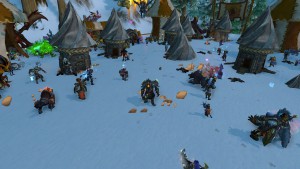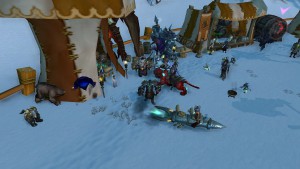The future is now
During my ongoing literature review I often discover interesting facts about things I’ve never thought about. Sometimes I can connect these facts with my own observations: The result is mostly a completely new idea why things are as they are. Maybe these ideas are new to you, too. Therefore I’ll share my new science based knowledge with you!
This week: This time, I think about the fast technological advancement of computer games.
On October 21, 2015, the future has become reality. At least, this is what happens in the movie „Back to the Future Part II“ as Marty McFly and Dr. Emmett „Doc“ Brown travel from the year 1985 to the year 2015 and are able to take a sneak peak at the future of the world. Although I do not want to compare the future shown in the movie with our reality, I have to admit that dehydrated pizzas would be a great addition to the standard frozen pizza selection we can find in our grocery stores these days.
As I watched Back to the Future Part 2 on this famous day, I really had to think about the most recent history of the computer game development. Just looking back at the last ten years makes me realize how fast the technological advancement is. Additionally, it is fascinating to play again a ten years old computer game that seemed very realistic back in the days. Today, the game brings back good memories, but my perception of it has drastically changed as it looks really stiff and the textures as well as the physics-engine seem no longer as realistic as they did ten years ago.
For instance, sports and racing games always had the goal to achieve a photo-realistic simulation of the sport in question. Ten years ago, they began to look good from a distance, but they never reached an authentic visual representation. Today, some simulation games have almost reached the goal of a photo-realistic simulation and could trick the human eye when the gameplay is shown on the TV instead of a live coverage of a sport event.
However, this is not the end as the virtual reality (VR), which will achieve a new dimension of immersion, is approaching fast. For instance, the Oculus Rift will be released in Q1 2016 and promises a new immersive experience. The Oculus Rift itself is a head-mounted display that actually allows its users to look around in a virtual world. VR is the next step that brings us closer to a total immersion as the immersion is currently broken as soon as the user looks to the side and thus away from the monitor. This issue will be solved with head-mounted displays that react to the movement of the user’s head.
Aside from the technological advancement of the computer game development itself, new forms and use cases of computer games have been found. Computer games are used for educational purposes and even encode knowledge that can be learned during the gameplay. Those virtual learning environments keep the learners engaged and achieve the same learning outcome as traditional learning methods. Furthermore, due to the technological advancement of the internet, watching the gameplay of other players in the form of Let’s Play videos and live streams has become a new form of entertainment.
As a conclusion, the last ten years have greatly changed the computer games and created new use cases of them. I’m already looking forward to take a look back at today’s photo-realistic games and to compare them to games that will exist in ten years from now.







